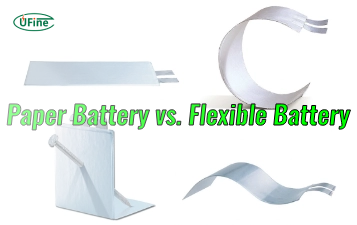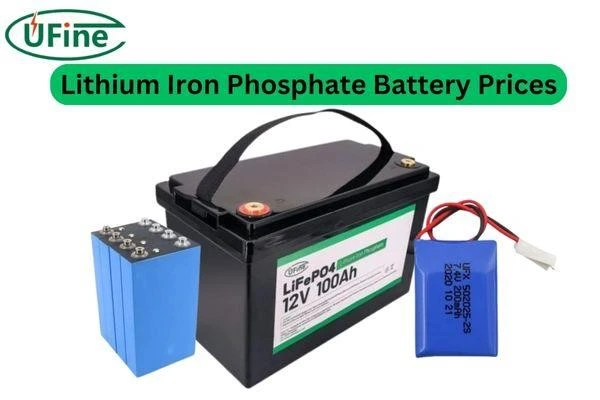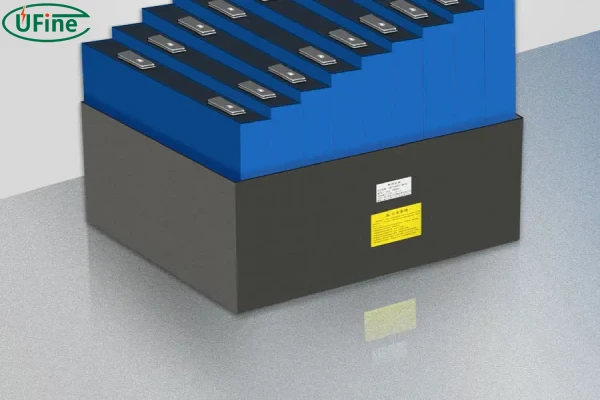Lithium iron phosphate, commonly known as LiFePO4, is becoming increasingly popular due to its safety, long lifespan, and durability. It can be a positive change for your electric devices as it does not need maintenance and frequent change. However, lithium iron phosphate battery price is 3 to 4 times higher than traditional batteries. This article will explore lithium iron phosphate battery prices by knowing its factors, capacities, and future trends.
Part 1. What affects lithium iron phosphate battery prices?
Each factor contributes to determining the lithium iron phosphate battery price. We can not make one factor responsible for the high LiFePO4 price tag. Let’s discuss some of the important factors one by one.
1. Raw Material
LiFePO4 battery combines lithium materials like lithium, cobalt, nickel, and graphite. The prices of materials like lithium cobalt oxide (LCO) are around $50 to $60 per kg, lithium iron phosphate (LFP) costs around $15 to $20 per kg, and lithium nickel manganese cobalt oxide (NMC) costs $25 to $35 per kg. Besides these, many other materials are utilized in manufacturing LiFePO4 batteries. Therefore, the price of lithium iron phosphate batteries always depends on the material cost.
2. Manufacturing Cost
Manufacturing cost is another deciding factor in the price of lithium iron phosphate batteries. It includes labor, energy, maintenance, and equipment costs. Everything in the manufacturing process adds to the lithium iron phosphate battery price.
3. Features and Technology
Nowadays, LiFePO4 batteries are becoming smarter and more efficient. Features like Bluetooth connectivity, LCDs, wifi integration, self-heating, and Battery Management System (BMS) can explain the increase in lithium iron phosphate battery price. Though these features are helpful during battery usage, the initial cost is higher compared to a simple LiFePO4 battery.
4. Supply Chain
Supplying batteries everywhere around the world can cost more than LiFePO4 batteries. Moreover, the margins of the seller and dealers over each battery unit make lithium iron phosphate battery prices rise.
5. Market Competitions and Trends
With each passing day, many brands produce the latest innovative battery models. They compete with each other. Therefore, many models are affordable, whereas lithium iron phosphate battery prices of top-selling models are high due to increased demand.
Part 2. Why is LiFePO4 more expensive than AGM and lead-acid battery?
When we compare LiFePO4 to lead acid and AGM battery from the price perspective, LiFePO4 battery is 3 to 4 times more expensive. AGM is an Absorbent Glass Mat technology that is a more advanced form of a lead acid battery. It is a sealed battery designed to protect electrolytes from spilling, making a battery version of a lead acid battery. Here are several reasons lithium iron phosphate battery prices are higher than those of AGM and lead acid batteries.
- Longer Lifespan: A LiFePO4 battery has a longer lifespan of around 4,000 cycles life. On the other hand, lead acid and AGM have a 300 to 500-cycle life.
- Fast Charging: Lithium iron phosphate charges fast from 1C to 2C. While AGM and lead acid batteries need double the time to charge the battery.
- Depth of Discharge: AGM battery’s DoD is between 50% to 80%. Whereas LiFePO4 has a higher DoD of around 90%.
- Weight and Size: LiFePO4 battery is compact with high energy density. It is 60% to 70% lighter in weight than the AGM battery.
Part 3. Common price range of lithium iron phosphate batteries
Estimating the lithium iron phosphate battery price is much more difficult as prices vary by brand and added features. However, we can discuss the common price tag you can expect from a specific LiFePO4 battery capacity.
12V Lithium Iron Phosphate Battery Price
The price range for a 12V LiFePO4 battery can vary depending on the capacity, brand, and location. Renogy is selling its 12V 200Ah battery for $949.99, and Litime is providing a LiFePO4 battery with the same capacity for $529.99. Generally, the lithium iron phosphate battery price stands between $600 to $800.
24V Lithium Iron Phosphate Battery Price
The price bracket of a 24V LiFePO4 battery is not different from a 12V battery. However, an increase or decrease in capacity can differentiate the price. It also ranges between $600 to $900, in 200AH capacity.
36V Lithium Iron Phosphate Battery Price
36V battery is hard to find as high energy flow is often needed in electric vehicles, solar systems, and off-grid stations. Many renowned manufacturers sell 36V batteries, like Ufine Battery, which offers all battery customization services that meet your needs. Similarly, Diypow sells a 36V 200Ah battery for $2150, whereas Tycorun’s is $4,399, and Lynx’s battery is $2400. Overall, the 36V 200AH lithium iron phosphate price ranges between $2,000 and $2,500.
48V Lithium Iron Phosphate Battery Price
A 48V LiFePO4 battery can cost between $2,000 to $3,000, with 200Ah capacity. It always depends on the brands, as PowMr sells for $2,296, and Relion sells the expensive one for $6,995.
Part 4. How much does a LiFePO4 battery cost per KWh?
Usually, it always depends on the brand you want to choose. There are hundreds of brands in the market that offer LiFePO4 batteries at low prices. On the contrary, some popular, trusted brands sell batteries with the same capacities at the highest rates.
However, we have generated a list of some trusted brands that offer compatible lithium iron phosphate battery prices.
| Brand Name | AH Capacity | Voltage | Price | Price Per kWh |
|---|---|---|---|---|
| Eco-Worthy | 280×2 | 12 | $1000 | $139.508 |
| Power Queen | 100×4 | 12 | $942 | $183.592 |
| LiTime | 100×2 | 12 | $513 | $200.828 |
| WEIZE | 100×1 | 12 | $290 | $226.555 |
| Temank | 100×1 | 48 | $1400 | $273.436 |
Part 5. Future trend of lithium iron phosphate battery price
As the LiFePO4 battery technology matures and manufacturing processes become more efficient, lithium iron phosphate battery price is expected to decline over time. Factors that may contribute to this trend include:
- Economies of Scale: Increased production volumes and the expansion of manufacturing facilities can lead to lower per-unit costs.
- Technological Advancements: Improvements in battery chemistries, cell designs, and manufacturing techniques can reduce production costs.
- Raw Material Costs: Fluctuations in lithium, iron, phosphate, and other key materials used in LiFePO4 batteries can impact the overall cost.
- Market Competition: The entry of new players and increased competition in the LiFePO4 battery market can put downward pressure on prices.
Industry experts predict that lithium iron phosphate battery price per kWh could decrease by 30-50% over the next five to ten years. It will make them increasingly affordable and accessible for applications, including electric vehicles, renewable energy storage, and various industrial and residential uses.
Related Tags:
More Articles

Paper Battery vs. Flexible Battery: What’s the Difference and Which Is Better?
Paper vs. flexible batteries: learn the key differences, benefits, and which power source fits best for wearables, sensors, and smart tech.
What to Know Before Buying a Tiny LiPo Battery for Your Project
Tiny LiPo batteries are powerful and compact. Learn how to choose the right one for your project with specs, safety, and charging tips.
Bloated LiPo Battery: Will It Explode?
Will a bloated LiPo battery explode? Discover the causes, risks, safety steps, and expert tips to avoid disaster and protect your gear. Must-read safety guide!
12V 100Ah Lithium Ion Battery Price: Full Guide
Learn about 12V 100Ah lithium-ion battery price, from cost ranges to best brands, hidden fees, and how to get the best deal. A must-read for smart buyers!
Resistance and Conductivity: What It Means for Your Lithium Batteries
Resistance and conductivity impact lithium battery performance, lifespan, and safety—learn how they work and why they matter.





